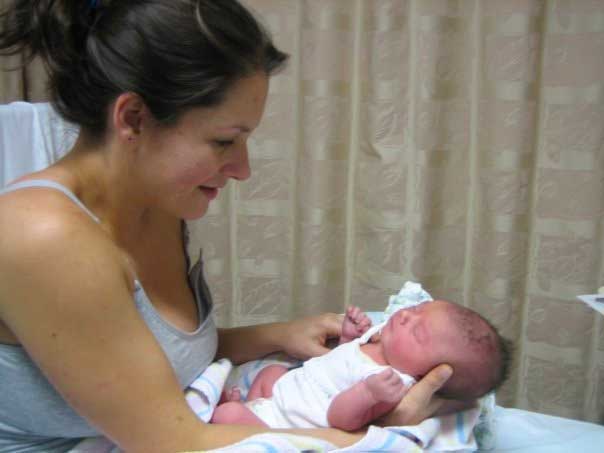Could your pelvic floor be too tight to push a baby out?
Written by
Jen Dugard
Aug 31, 2018 •

I left the delivery suite giving myself a pat on the back. “They said your pelvic floor was really strong,” my husband told me. Awesome, I thought to myself. Stronger is always better, right?
Well, yes, but kinda. What I know now, that I didn’t know then, is that not only do you need a strong pelvic floor but you also need a well functioning pelvic floor that can not only contract but – you guessed it – release….. so you can push a baby out. Sounds like common sense, I know. But I didn’t know then what I know now and my instinct, along with many years now spent working with mums, tells me that many, if not most, women have no idea that they might need to actually learn how to relax their pelvic floor so that they can effectively, and with as little trauma as possible, push a baby out.
From the perspective of a mum of two and as a fitness professional who has, in the past ten years, worked with hundreds of mums, talked through hundreds of pre-exercise questionnaires and heard hundreds of birth experiences, I know that I am often the very first person who is having an in-depth conversation with women about their pelvic floor. And in some cases even about what happened during their birth experience. And it makes me wonder.
What if all women were assessed during pregnancy for pelvic floor function? For the ability to contract AND release? For strength and endurance? With more and more women exercising to a higher level, making things tighter, stronger, more toned, what if this might be contributing to more women having what we call a ‘hypertonic’ or ‘overactive’ pelvic floor? What if there are more women who don’t know how to relax and release PF? And what if we knew about these women and we could therefore reduce the risk of their having a more challenging birth or requiring assisted delivery?
I believe that it is our responsibility to know. I believe that women need to be offered more insight into their body, from the inside out, in the lead up to having their baby and not just left to pick up the pieces afterward and feel like “I wish someone had told me sooner.” I believe that the more we talk about things like this, about birth experiences, about what we didn’t know then and we do know now, we can collectively improve our pregnancy, birth and post-pregnancy journeys.
My personal recommendation is to advise all of my pregnant clients to see a Women’s Health Physiotherapist mid-way through their pregnancy to make sure their pelvic floor is strong and that it can relax. After all, if something as simple as a physio appointment has the possibility to reduce the risk of an assisted delivery due to an overactive pelvic floor, then it’s definitely worth a shot!
Please keep in mind that this article is based on personal opinion and experience over the past ten years. It is not clinically researched and is written with the aim of helping more women to consider different factors that might help or hinder their birth experience and to assist them in seeking out the best support to ensure they can make the most informed and educated decisions.
Written by
Jen Dugard
Mum-focused author, educator and business owner, Jen Dugard is on a mission to ensure every woman is safely and effectively looked after when she becomes a mother. She is a highly qualified trainer and fitness professional educator and has been specialising in working with mums for over a decade. MumSafe is the go-to place online for women to find mum-focused fitness services that are all accredited, experienced and partnered with women’s health physios so you know you are in very safe hands.
Comments Off on Could your pelvic floor be too tight to push a baby out?
More stories by Jen Dugard
All stories by Jen Dugard
